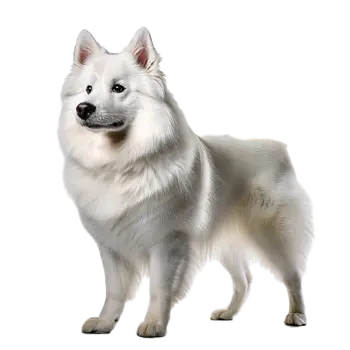Within family settings, Miniature Eskimo Dogs establish themselves as integral members who contribute actively to household routines while forming strong emotional bonds with all family members. Their size advantage allows them to participate in family activities without overwhelming smaller children or elderly family members, while their intelligence enables them to understand and adapt to different family members' needs and preferences. They often develop special relationships with each family member, adjusting their behavior and interaction style accordingly.
With children, properly socialized Miniature Eskimo Dogs become devoted companions who seem to understand the need for gentle interaction while maintaining their playful nature. Their size makes accidental injuries unlikely during play, while their intelligence helps them recognize appropriate play levels for different aged children. They often serve as emotional support for children, providing comfort during difficult times and companionship during quiet activities like reading or homework.
The breed's natural alertness extends to family protection, where they position themselves strategically to monitor household activities and potential threats. This protective instinct manifests as appropriate concern rather than aggression, making them excellent family guardians who use vocal warnings to alert their family to visitors or unusual activities. Their small size means they rely on intelligence and vocal deterrence rather than physical confrontation, making them suitable guardians for families seeking security without aggression concerns.
Integration with other family pets typically proceeds smoothly when proper introduction protocols are followed, as Miniature Eskimo Dogs generally possess sufficient confidence to coexist peacefully with larger dogs while maintaining appropriate boundaries with smaller pets. Their spitz heritage may initially trigger some dominant behaviors, but early socialization and consistent training help them develop positive relationships with other household animals.
Miniature Eskimo Dogs thrive in family environments that provide structure and inclusion, preferring to be involved in daily activities rather than isolated or ignored. They adapt well to various family schedules, from busy households with multiple activities to quieter homes with predictable routines. Their intelligence allows them to learn family rules and expectations quickly, while their size makes them easy to include in family outings and travel plans.
During family gatherings or social events, these dogs often serve as conversation starters and entertainment through their attractive appearance and charming personalities. They typically handle increased activity and visitor presence well when properly socialized, though they appreciate having quiet retreat spaces available when stimulation becomes overwhelming. Their natural discrimination between family and strangers helps them maintain appropriate behavior during social situations.
Training within family contexts works best when all family members participate consistently, using the same commands and expectations to prevent confusion or manipulation opportunities. Miniature Eskimo Dogs quickly learn which family members are most likely to provide treats, allow rule-breaking, or respond to attention-seeking behaviors, requiring family unity in maintaining boundaries and expectations. Their intelligence and emotional sensitivity make them particularly responsive to family mood changes, often providing comfort during stressful periods while adjusting their energy levels to match family needs.
The breed's longevity means they often serve as constant family companions through major life changes, from children growing up and leaving home to family relocations and lifestyle modifications. Their adaptability and strong family bonds help them navigate these transitions while providing stability and continuity for family members experiencing change. This long-term commitment makes them particularly valuable family members who truly grow up with and contribute to family development over many years.

